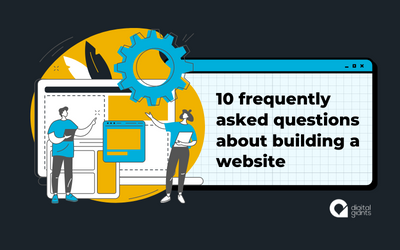Conversion Rate Optimization and Why You Need to Start
Is your website a dead end? Does your audience come to your website , visit the right pages and then leave? Are you wasting your budget to increase your traffic and still no results? Conversion rate optimization can fix all of those issues and help you achieve your organization’s goals.
What is conversion rate optimization?
Conversion rate optimization (CRO) is the process of increasing the percentage of conversions from your website. This process often involves testing variations of different elements against each other to identify the best performing option, these tests are called A/B tests, multivariate tests, or split tests.
Why is conversion rate optimization important?
Conversion rate optimization is important because it allows you to reduce your cost per acquisition (CPA) while increasing your revenue per visitor. As a result , you will be able to stretch your budgets and exceed your organization’s goals.
For example, if you have a web page with 1,000 visits and a conversion rate of 10%, you would have 100 conversions. By increasing your conversion rate to 15% you would generate 150 conversions (a 50% increase) with the same number of visitors.
100/1,000 = 0.1 or 10%
When you improve your conversion rates it benefits every channel. Today’s users have short attention spans and abandon their journeys much sooner. If you make it easier for them to take action on your website it reduces the likelihood of them leaving, this is especially true for channels such as social media and advertising where users tend to have higher bounce rates.
For other channels such as direct and organic search where you may have invested in search engine optimization, improving your conversion rates will improve the ROI.
Understanding Conversion Metrics
Depending on your organization’s goals, how you measure a conversion will be different. If you run an Ecommerce website your conversion will be a purchase or add-to-carts, if you are a media outlet your conversion goals may be pageviews, ad views, or subscriptions.
Establishing your conversion goals will help you to start hypothesizing different tests to improve your user experience and as a result, your conversion rate.
How is Conversion Rate Optimized?
To begin optimizing your conversion rate you will need to establish a baseline. As explained at the beginning, to find your conversion rate you need to take the goals completed and divide it by the number of visitors. This could be site wide or for a specific page, it will depend on your test.
Once you have established your baseline conversion rate you can start to identify different elements to test. For example, if you are trying to improve an advertising landing page you could test: button placement, button colours, form length, messaging variations, or a whole different layout.
If you have a large amount of traffic you shouldn’t need to make significant or dramatic changes. Keep the changes between your variants small and only test one thing at a time. If you test multiple changes it will be hard to understand what worked and what didn’t.
Free Tools For Conversion Rate Optimization
Thanks to Google you can conduct your own tests using their suite of tools. These tools are Google Analytics, Google Tag Manager, and Google Optimize. You may need to install them first, if you are unsure how to do this your developer can assist you.
How to use these tools:
Google Analytics – tracks and reports your website’s traffic and metrics, including conversions.
Google Tag Manager – allows you to configure and deploy tags on your website or app. This is where you would set up events such as a specific click or form fill. These would be reported in Google Analytics.
Google Optimize – Allows you to set up and run your A/B tests and reports on performance.
How You Can Improve Your Conversion Rate
Now that you have a better understanding of what your conversion rate is, check out our 8 tips to increase your conversion rate guide. These tips are applicable to any type of organization.



